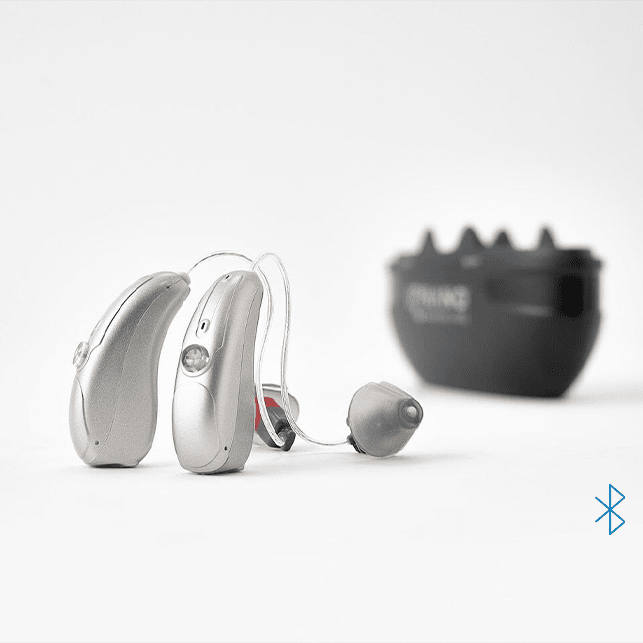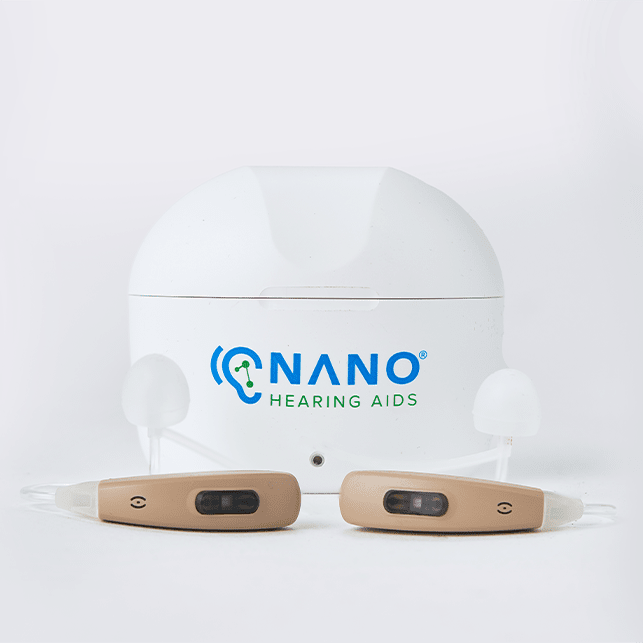Key Takeaways
- CIC OTC hearing aids are discreet and fit completely in the ear canal, making them nearly invisible.
- BTE OTC hearing aids are larger and sit behind the ear, offering more features and longer battery life.
- CIC OTC hearing aids are designed for perceived mild to moderate hearing loss, just like BTE OTC hearing aids, offering different styles and features to suit personal preferences.
- Customization options and advanced functionalities differ between CIC and BTE OTC hearing aids.
- Nano offers FDA-registered CIC and BTE OTC hearing aids, including the First Ear Pro CIC for a nearly invisible fit and the First Ear Pro BTE with a comfortable fit and advanced features.
Nano Hearing Aids are FDA-registered, Class I devices. These OTC hearing aids are designed for individuals over 18 years of age with perceived mild to moderate hearing impairment. Nano won the Top ENT Solution Provider 2023, has 24/7 customer care, and has an affordable price compared to others.
What are CIC and BTE OTC Hearing Aids?
CIC OTC hearing aids fit deeply within the ear canal, offering a discreet solution for individuals, while BTE OTC hearing aids sit behind the ear, often featuring more advanced technology.
Types of Hearing Loss Addressed by CIC and BTE
CIC OTC hearing aids are suitable for perceived mild to moderate hearing loss - offering enough amplification for daily use; BTE OTC hearing aids also address mild to moderate hearing loss, providing more powerful amplification and additional features compared to CIC models.
Features of CIC and BTE OTC Hearing Aids
Features of CIC OTC Hearing Aids
- Discreet Appearance: CIC OTC hearing aids are nearly invisible when worn - ideal for those seeking a subtle device.
- Custom Fit: Most models come with several dome sizes or ear-tips to choose from, ensuring a secure and comfortable fit.
- Natural Sound Quality: Captures the natural acoustics of your ear - offering a more authentic listening experience.
Features of BTE OTC Hearing Aids
- Powerful Amplification: Provides more powerful amplification than CIC models, making it suitable for mild to moderate hearing loss
- Longer Battery Life: Larger size accommodates bigger batteries - extending usage time.
- Advanced Technology: Common features include directional microphones and other advanced sound processing features.
Advanced Functionalities Available
- Bluetooth Connectivity: some models enable wireless streaming of audio from smartphones, TVs, and other devices.
- Directional Microphones: Enhance speech understanding in noisy environments by focusing on specific sound directions.
- Noise Reduction: Reduces background noise, aiding in clearer conversation focus.
Customization Options
- Self-Assessment Tools: Higher-end OTC hearing aids include tools or software for assessing hearing loss and adjusting settings.
- Personalized Fit: The different ear tips or earmolds provide a comfortable and secure fit.
- Adjustable Settings: Allows users to fine-tune the device’s settings to match personal preferences and environments.
Pros & Cons of CIC and BTE OTC Hearing Aids
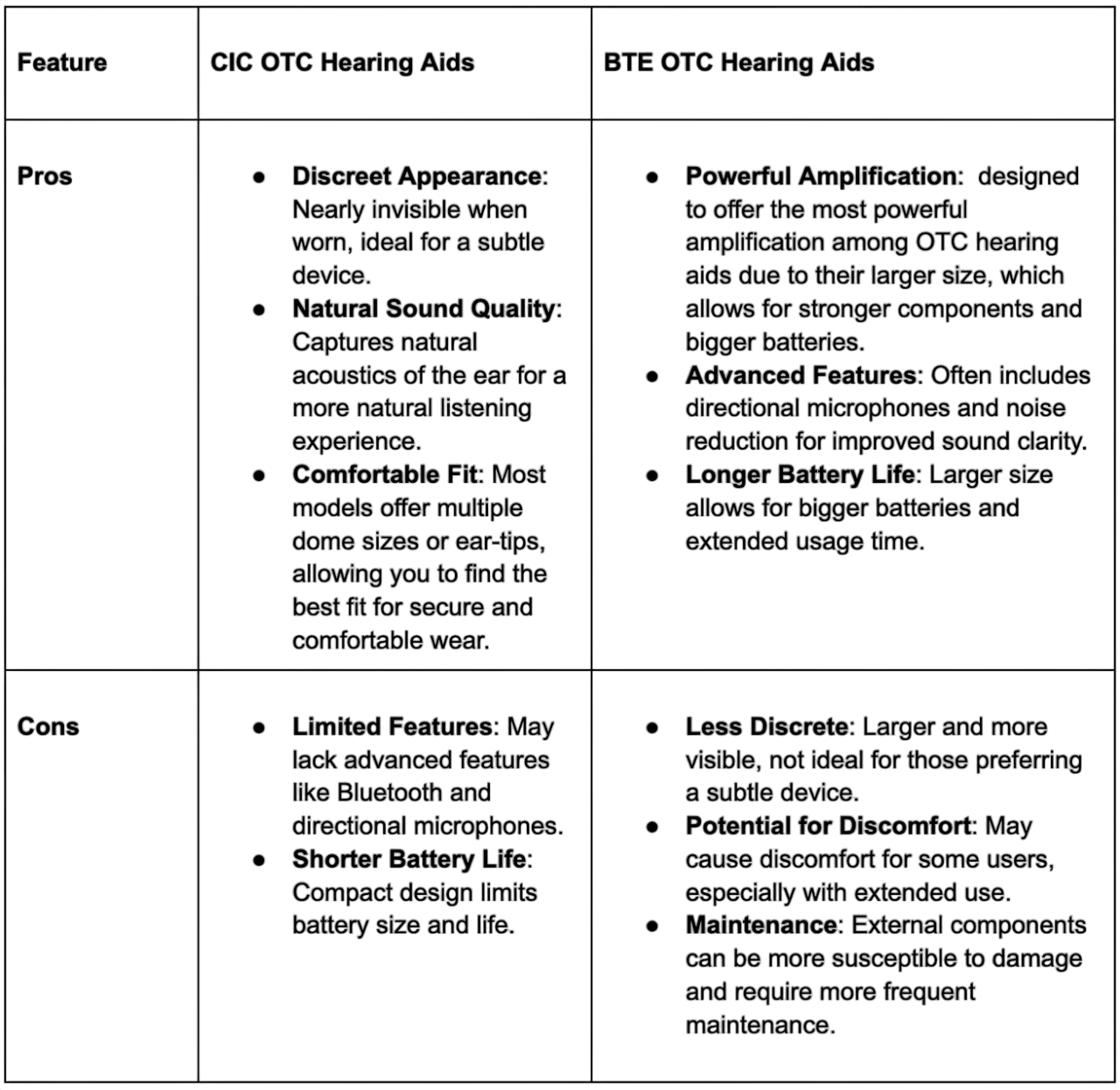
Benefits of CIC and BTE OTC Hearing Aids
Enhanced Listening Experience
CIC and BTE OTC hearing aids enhance listening in various environments - from quiet rooms to noisy restaurants - helping you hear and understand sounds more clearly. BTE models, with their powerful amplification, are particularly effective in challenging listening situations, while CIC aids offer discreet support in more controlled sound environments.
Improved Speech Understanding
Both CIC and BTE OTC hearing aids amplify speech sounds - improving your ability to follow conversations and engage in social activities. BTE aids, with their advanced sound processing, are especially beneficial for distinguishing speech in noisy environments, while CIC aids provide a more subtle enhancement in quieter settings.
Ease of Use
CIC and BTE OTC hearing aids are user-friendly - with easy-to-use controls and customizable settings - allowing adjustments to fit your hearing needs. BTE models typically offer larger controls, making them easier to handle, while CIC aids provide a more discreet, seamless experience for those who prefer less visible adjustments.
Nano First Ear Pro BTE - Robust performance with user-friendly controls and a portable charging case.
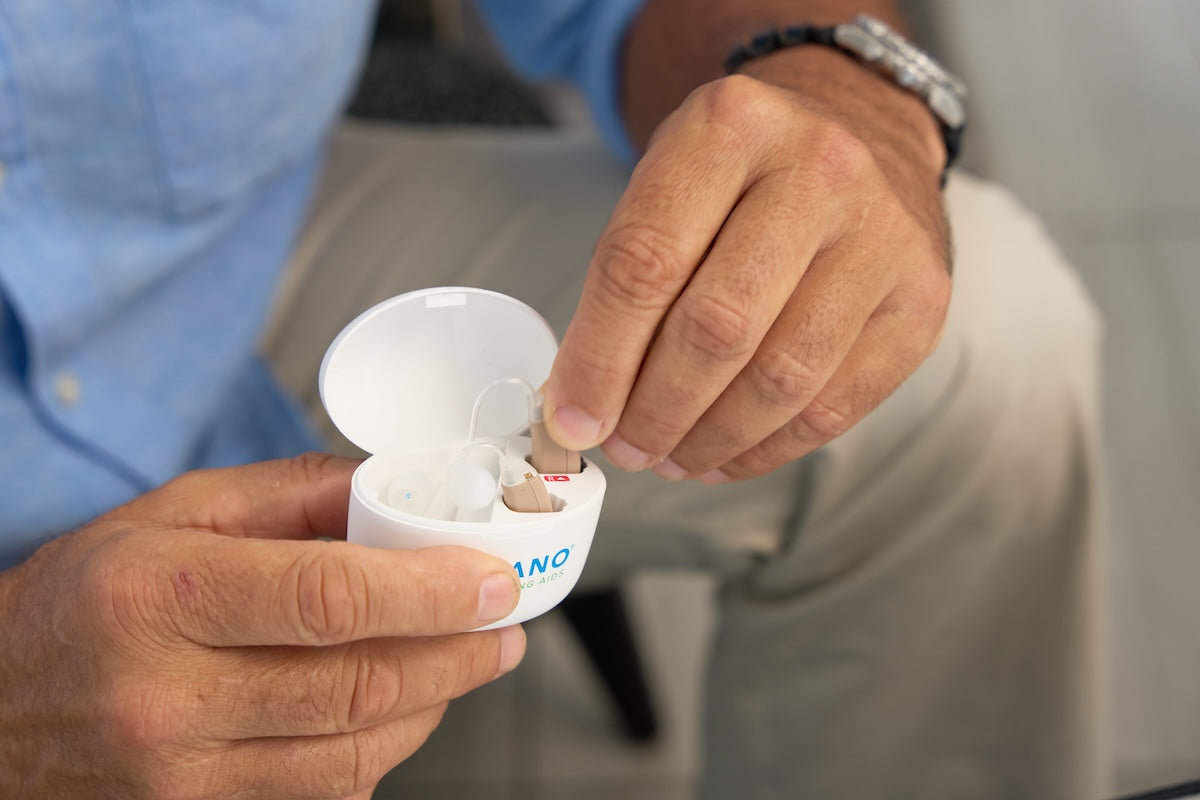
Price Comparison of CIC and BTE OTC Hearing Aids
Average Cost of CIC OTC Hearing Aids
CIC OTC hearing aids are generally more expensive than BTE models due to their smaller size and discreet design. The average cost starts from $397 and can go up to $1,500 per device, depending on features and brand. Nano’s First Ear Pro CIC model is affordably priced at $397, making it an accessible option for those with mild to moderate hearing loss.
Average Cost of BTE Hearing Aids
BTE OTC hearing aids tend to be more affordable than CIC models, with prices starting from $297. Although they offer advanced features and more powerful amplification, they typically come at a lower cost. Nano’s First Ear Pro BTE mode,for instance,l is available for $497, providing a budget-friendly alternative for those seeking robust amplification.
Factors Influencing Prices
- Technology Level: Advanced features like Bluetooth connectivity, noise reduction, and directional microphones increase the cost.
- Brand: Established brands with a reputation for quality may charge more.
- Customization: Customizable ear tips or earmolds add to the cost.
- Warranty and Support: Extended warranties and customer support services impact the price.
Why Choose Nano OTC Hearing Aids?
Nano First Ear Pro CIC - Compact design for an invisible fit and powerful performance.
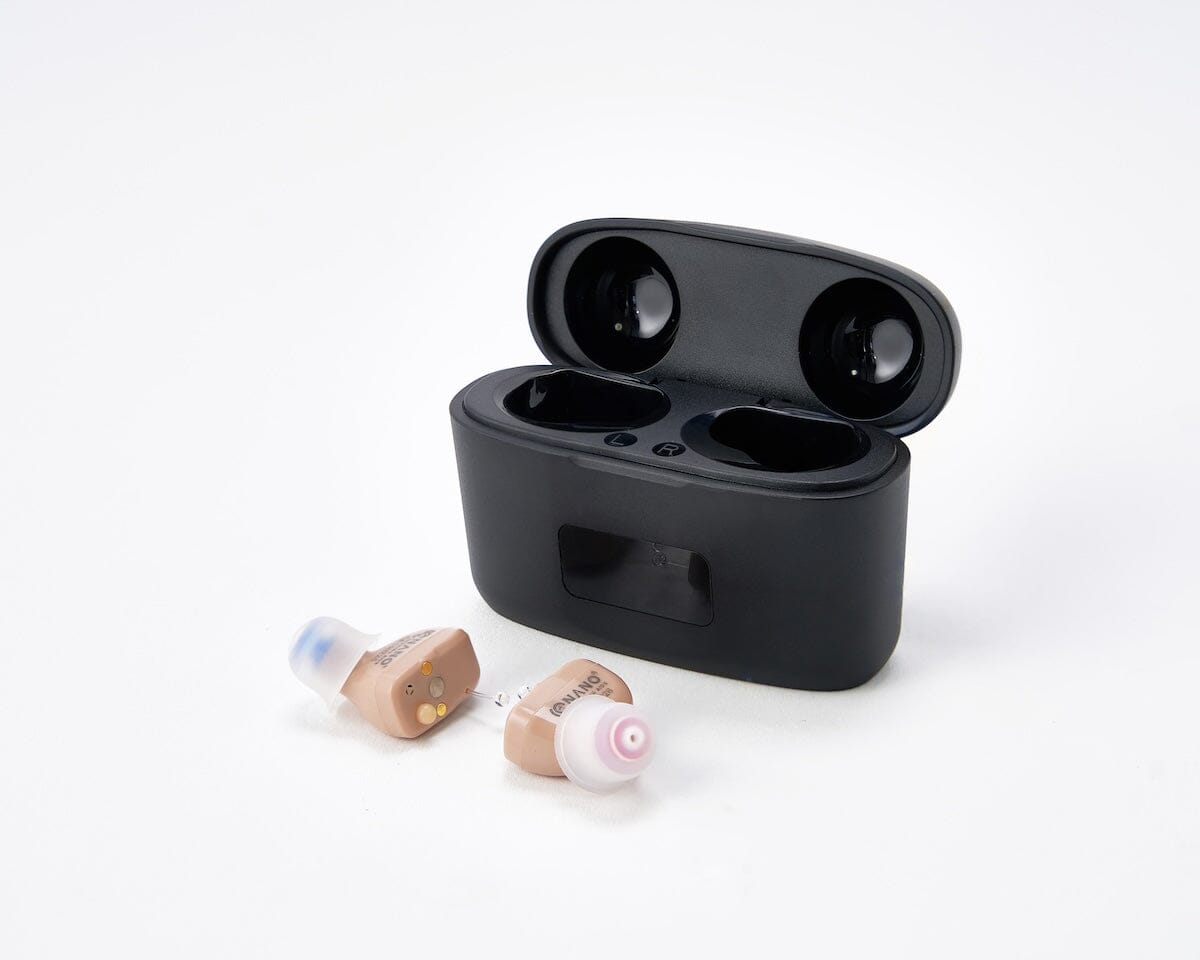
Nano offers FDA-registered, Class I medical devices - genuine devices, not PSAPs or simple amplifiers. With over 7 years of experience, we offer safe and effective OTC hearing aids, providing a reliable alternative to higher-classification devices.
Our Nano First Ear Pro CIC, priced at $397, offers up to 18 hours of use per charge. The model comes with 3 listening programs and provides advanced noise management and feedback cancellation, alongside push-button control for easy adjustments.
Our Nano First Ear Plus BTE, priced at $297, features a portable charging case for up to 3 full charges, 2 listening programs, and simple rocker switch controls. It offers effective feedback cancellation and noise management.
Both models come with a 1-year manufacturer warranty and a 45-day money-back guarantee.
Frequently Asked Questions (FAQ)
What Hearing Loss Do CIC and BTE Best Address?
CIC OTC hearing aids are ideal for perceived mild to moderate hearing loss, providing adequate amplification for everyday listening needs. BTE OTC hearing aids are also best suited for mild to moderate hearing loss but can offer slightly more powerful amplification than CIC models.
Can CIC and BTE Be Used Simultaneously?
Yes, CIC and BTE hearing aids can be used simultaneously, especially if you have different hearing loss levels in each ear. However, it's important to ensure both devices are properly calibrated and adjusted to work together effectively, typically done by a hearing care professional.
Are CIC and BTE OTC Hearing Aids Rechargeable?
Some CIC and BTE OTC hearing aids are rechargeable, while others use disposable batteries. Rechargeable models, like the ones offered by Nano Hearing Aids, eliminate the need for frequent battery replacements but may be more expensive.
How Long Do CIC and BTE OTC Hearing Aids Last?
The lifespan of CIC and BTE OTC hearing aids varies based on brand, usage, and maintenance. Typically, they last between 3 to 7 years but regular cleaning and proper care can extend their longevity.
What's the Return Policy for OTC Hearing Aids?
Nano Hearing Aids provides a 45-day satisfaction guarantee - you can return or exchange OTC hearing aids within this period if unsatisfied. For complete details, review our return policy before purchase.
What Are the Prices for Nano Hearing Aids?
Nano Hearing Aids offers competitive pricing for both CIC and BTE models. The Nano First Ear Pro CIC OTC hearing aids are available at $397, featuring a small, discreet design with advanced features such as noise reduction and rechargeable functionality. The Nano First Ear Plus BTE OTC hearing are priced at $297, providing powerful amplification and longer battery life. Prices may vary based on promotions and additional protection plans. For the latest pricing and offers, visit our website or contact customer support.

